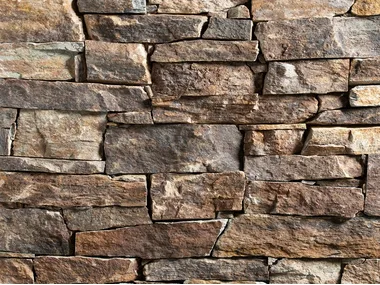In the world of architecture and construction, cladding plays a pivotal role not only in protecting structures but also in enhancing their aesthetic appeal. The choice of cladding materials can make or break the overall look and durability of a building. In this article, we delve into the world of cladding, exploring its importance, various options, and how choosing trusted cladding can elevate your architectural projects.
The Significance of Cladding
Cladding serves as the protective skin of a building, shielding it from environmental factors such as rain, wind, and UV radiation. Beyond its protective function, cladding also contributes to the energy efficiency of a structure and can significantly impact its overall aesthetics.

Read more home renovation tips here.
Enhancing Aesthetics
The visual appeal of a building is a key consideration in architectural design. Cladding materials come in various textures, colors, and finishes, allowing architects and builders to create unique and striking facades. Whether you’re aiming for a sleek modern look or a rustic charm, the choice of cladding can bring your architectural vision to life.
Ensuring Durability
Durability is a non-negotiable factor in construction. Trusted cladding materials are designed to withstand the test of time and environmental stressors. They offer protection against moisture, temperature fluctuations, and physical damage, ensuring the longevity of a building.
Exploring Cladding Options
When it comes to cladding materials, there’s a wide array of options available. Each material has its own set of characteristics and advantages, allowing you to select the one that best suits your project’s requirements.
1. Brick Cladding
Brick cladding has been a classic choice for centuries. Its timeless appeal and versatility make it suitable for both traditional and contemporary designs. Brick cladding offers excellent thermal insulation and is known for its longevity.
2. Stone Cladding
Stone cladding exudes natural beauty and sophistication. It comes in various types, including granite, limestone, and slate. Stone cladding adds a touch of elegance to any building and is highly durable.
3. Metal Cladding
Metal cladding, such as aluminum and steel, is favored for its sleek and modern appearance. It is lightweight, low maintenance, and can be customized to achieve specific design goals. Metal cladding is also known for its resistance to corrosion.
4. Wood Cladding
Wood cladding brings warmth and a sense of nature to architectural projects. It’s a sustainable choice and can be used to create both traditional and contemporary designs. Properly treated wood cladding can last for decades.
Choosing Trusted Cladding
Selecting the right cladding material is a decision that should not be taken lightly. To ensure the success of your architectural project, consider the following factors:
1. Climate Considerations
The local climate plays a significant role in determining the ideal cladding material. For regions with high rainfall, moisture-resistant materials like metal or fiber cement may be preferred. In areas with extreme temperature fluctuations, materials with good thermal insulation properties should be considered.
2. Maintenance Requirements
Different cladding materials have varying maintenance needs. While some require regular cleaning and sealing, others can withstand harsh weather conditions with minimal upkeep. Understanding the maintenance requirements is crucial for the long-term sustainability of your project.
3. Budget Constraints
Budget is often a determining factor in cladding material selection. While premium materials like natural stone can be costly, there are more budget-friendly options like vinyl or fiber cement that offer durability without breaking the bank.
4. Architectural Vision
Ultimately, your architectural vision should guide your cladding material choice. Consider how the selected material aligns with the overall aesthetics and design concept of your project. It should complement and enhance the architectural vision rather than detract from it.
Conclusion
In the realm of architecture and construction, the importance of trusted cladding cannot be overstated. It serves as the protective shield and the face of a building, impacting both its durability and visual appeal. Whether you opt for the timeless charm of brick, the elegance of stone, the modernity of metal, or the warmth of wood, your choice of cladding material will define the character of your architectural masterpiece.
Selecting the right cladding material is a decision that should be made with careful consideration of climate, maintenance, budget, and architectural vision. By choosing trusted cladding that aligns with these factors, you can bring beauty and longevity to your architectural projects that will stand the test of time.








Comments 1